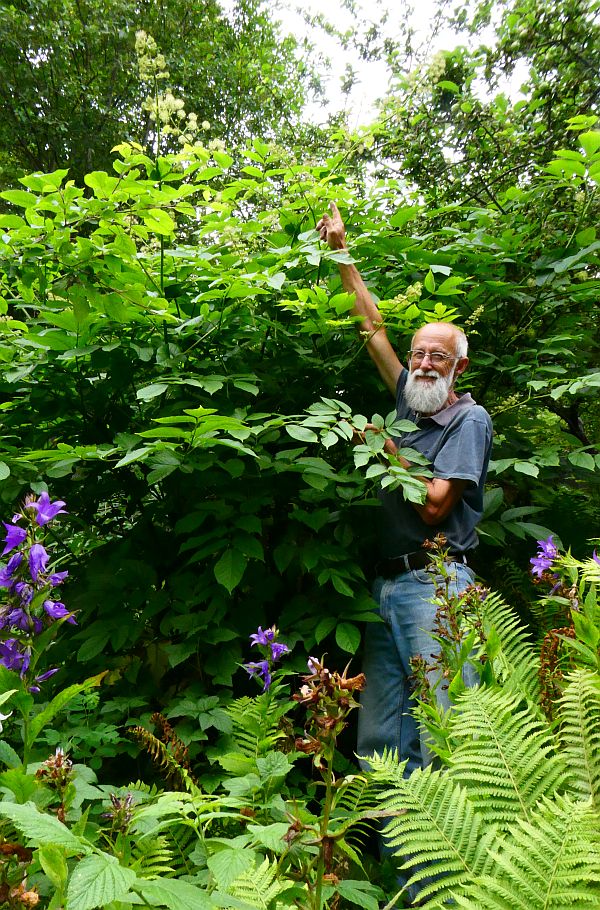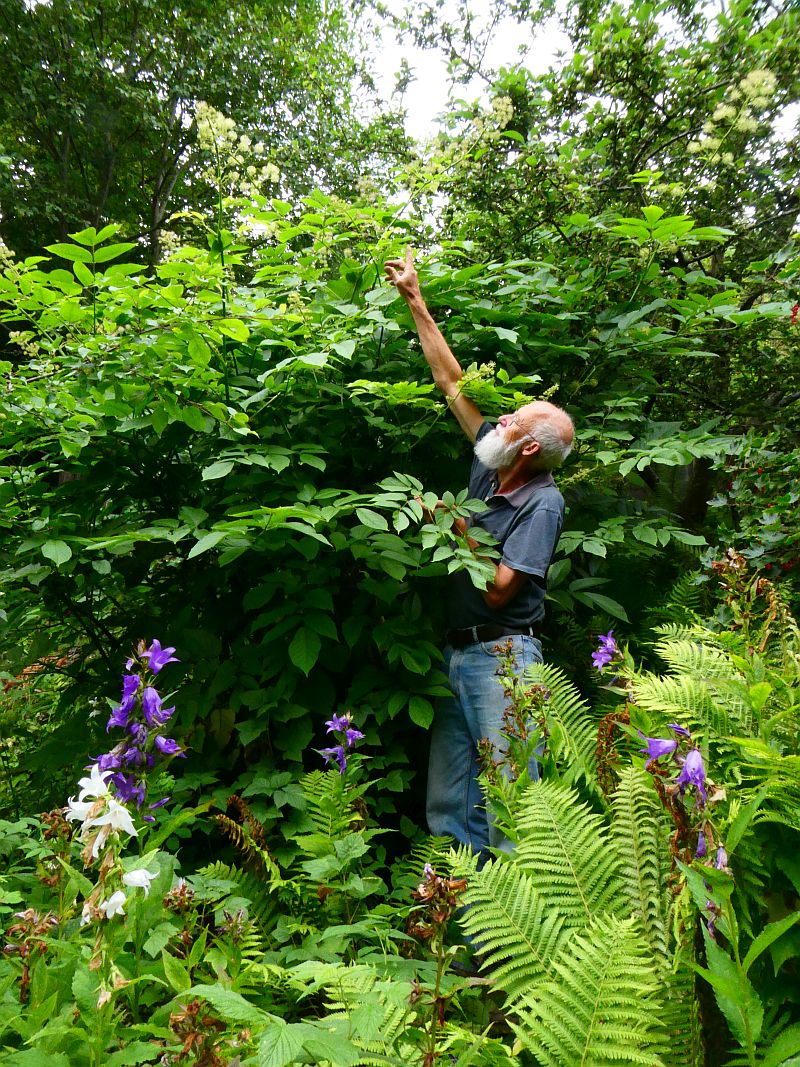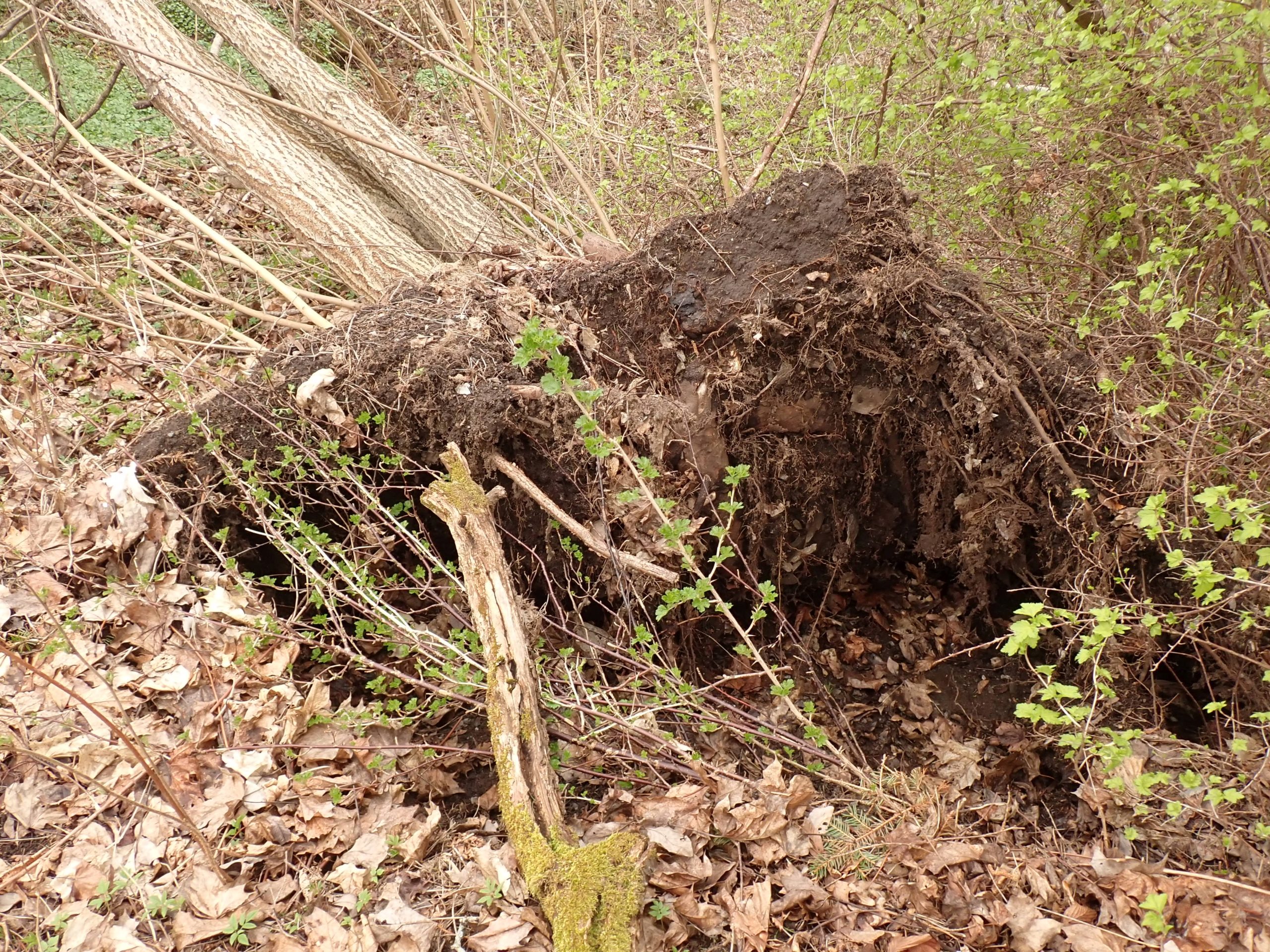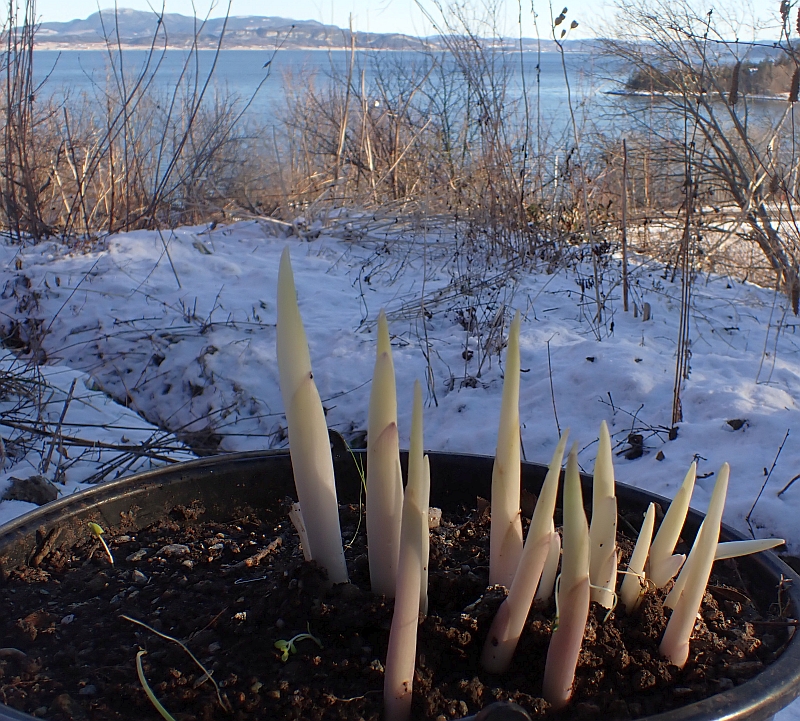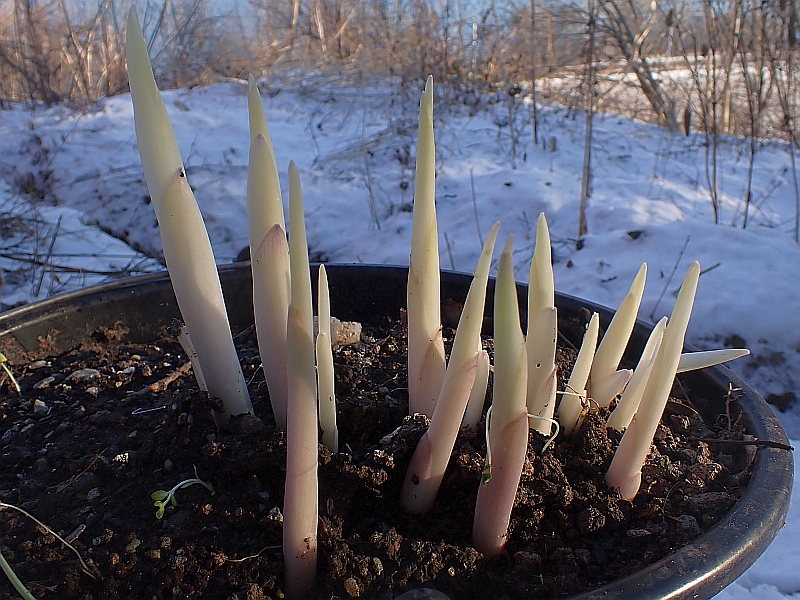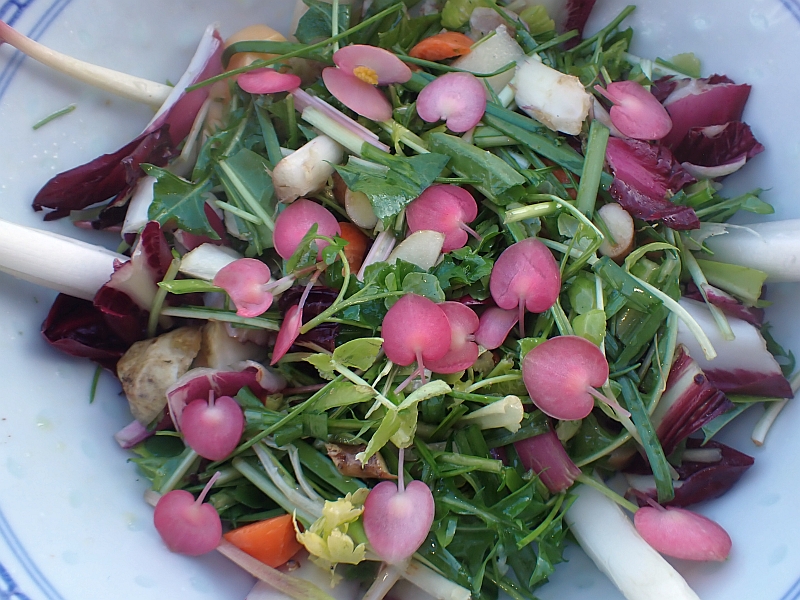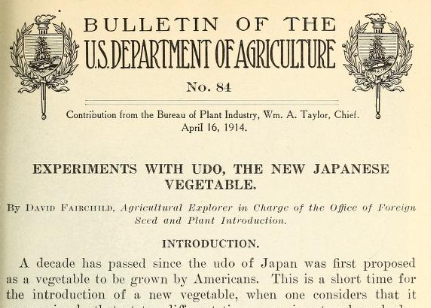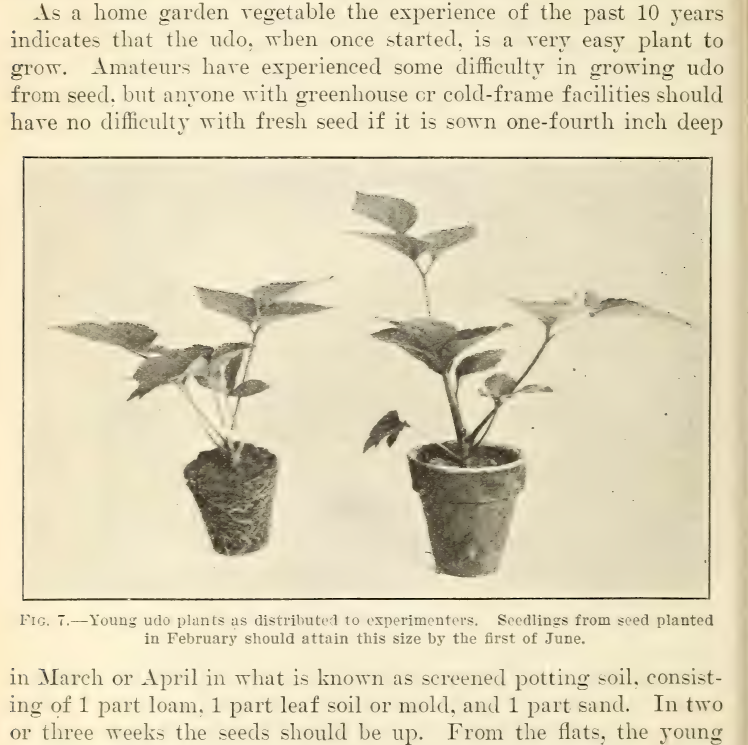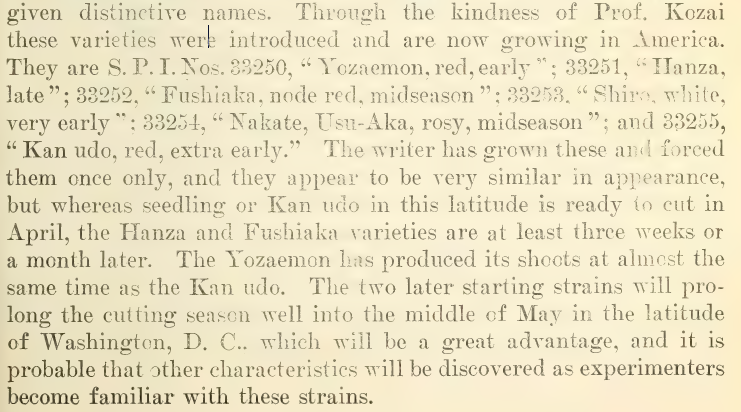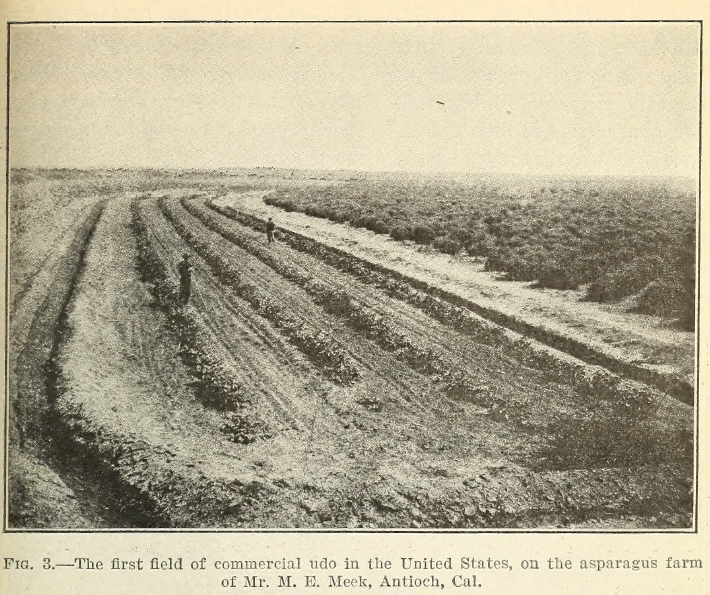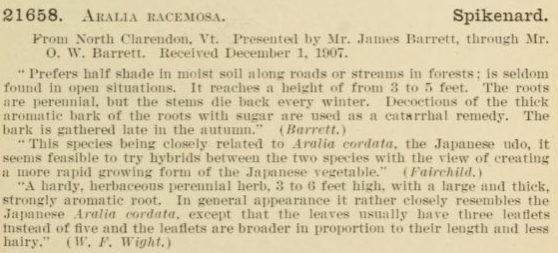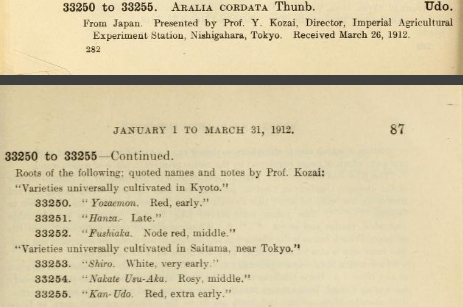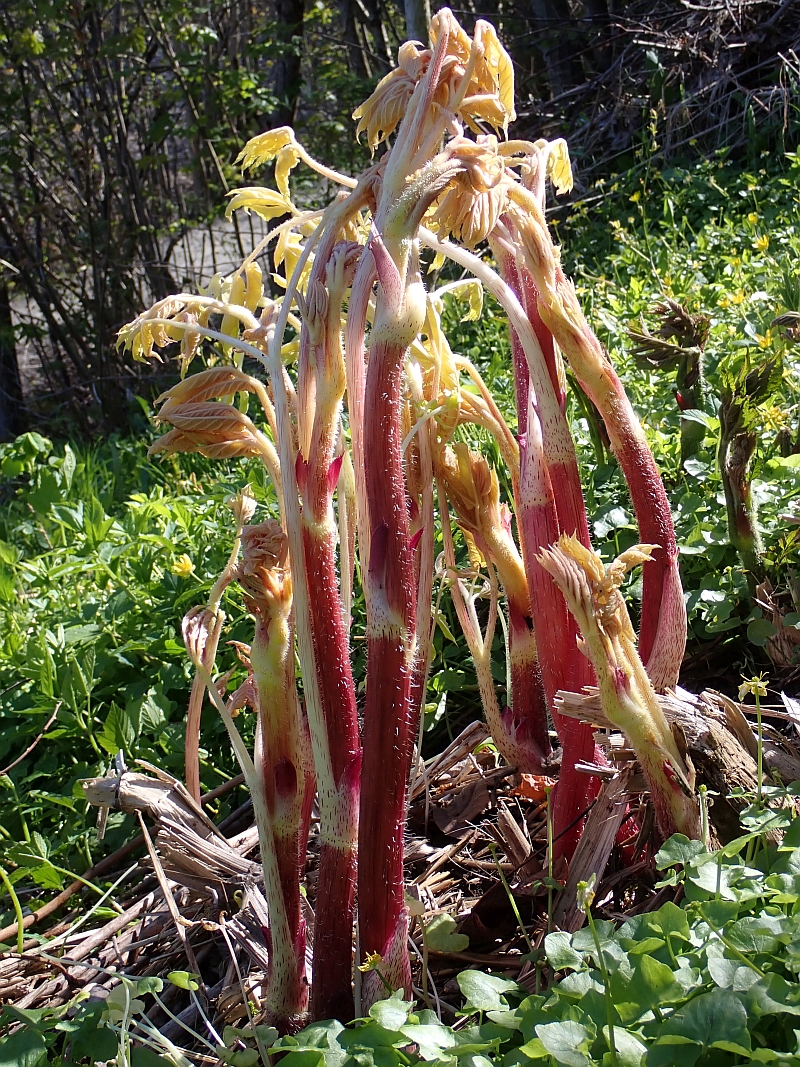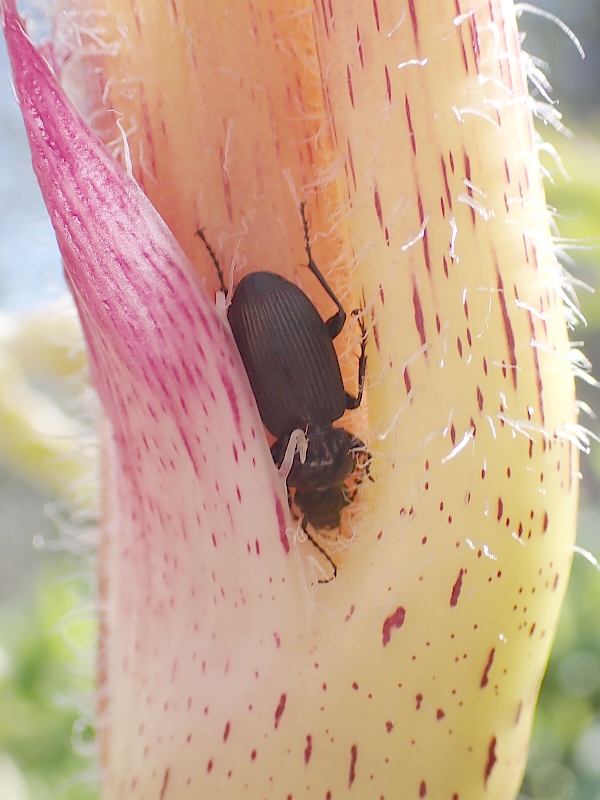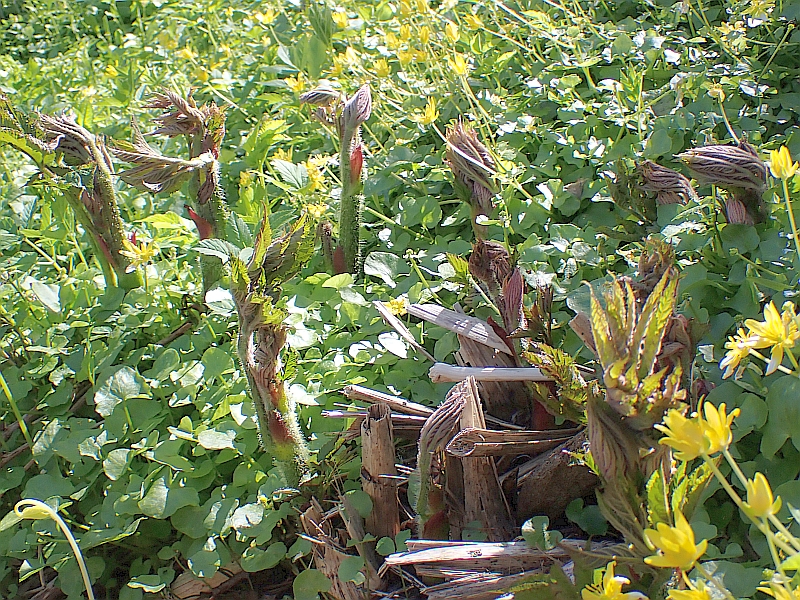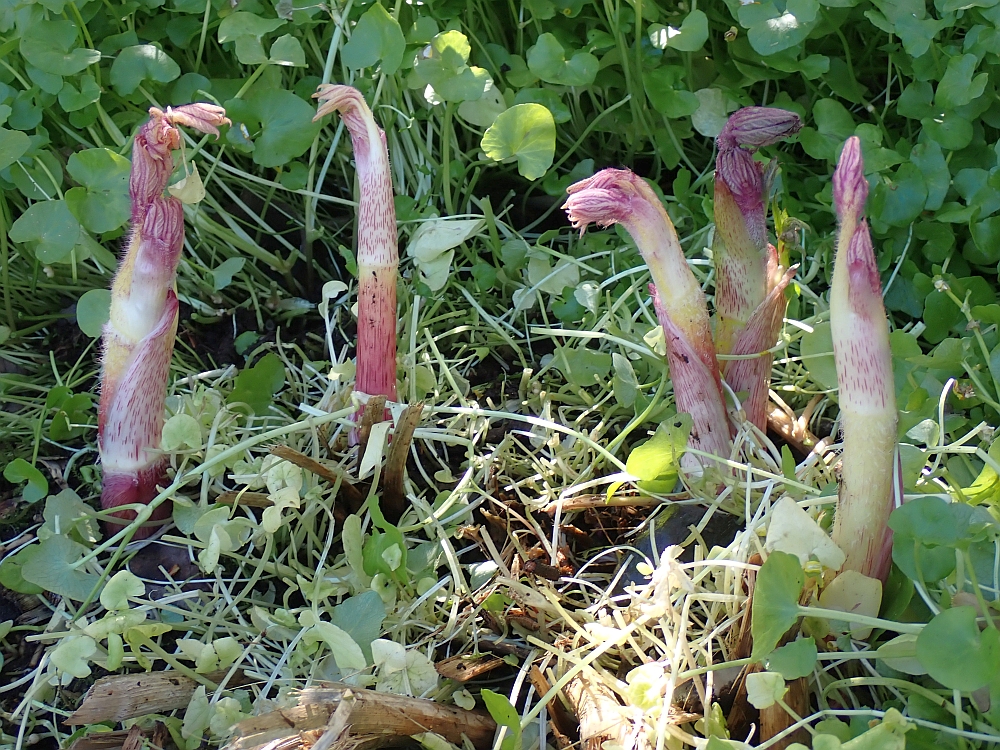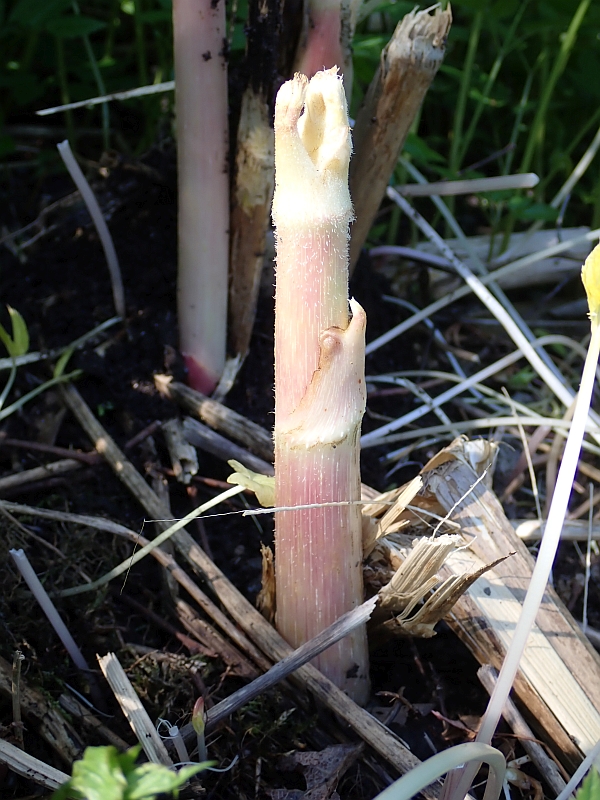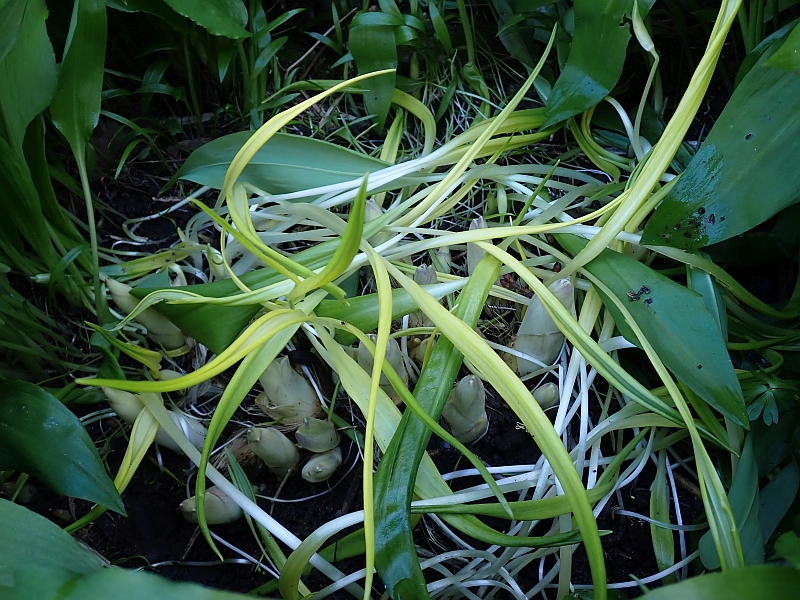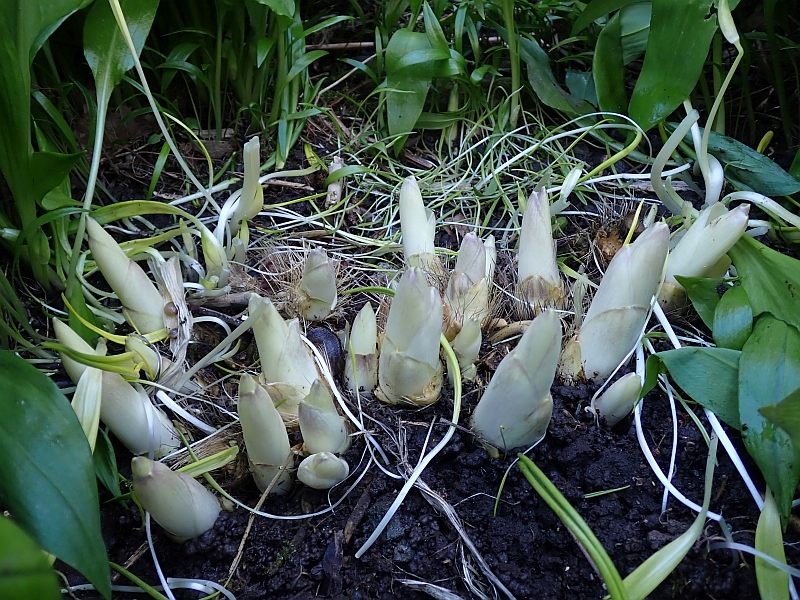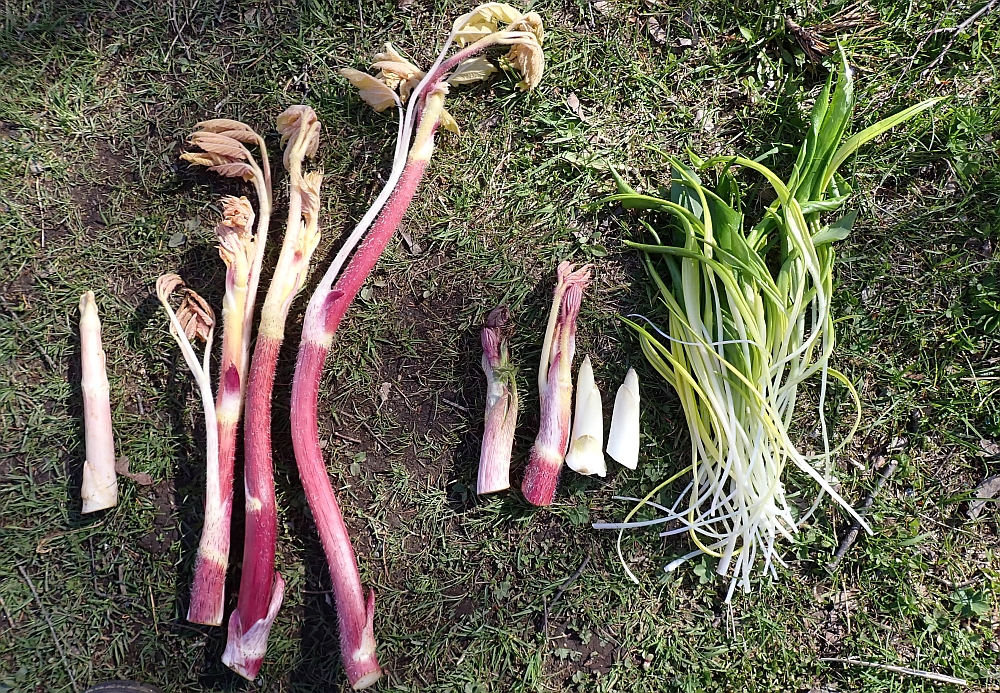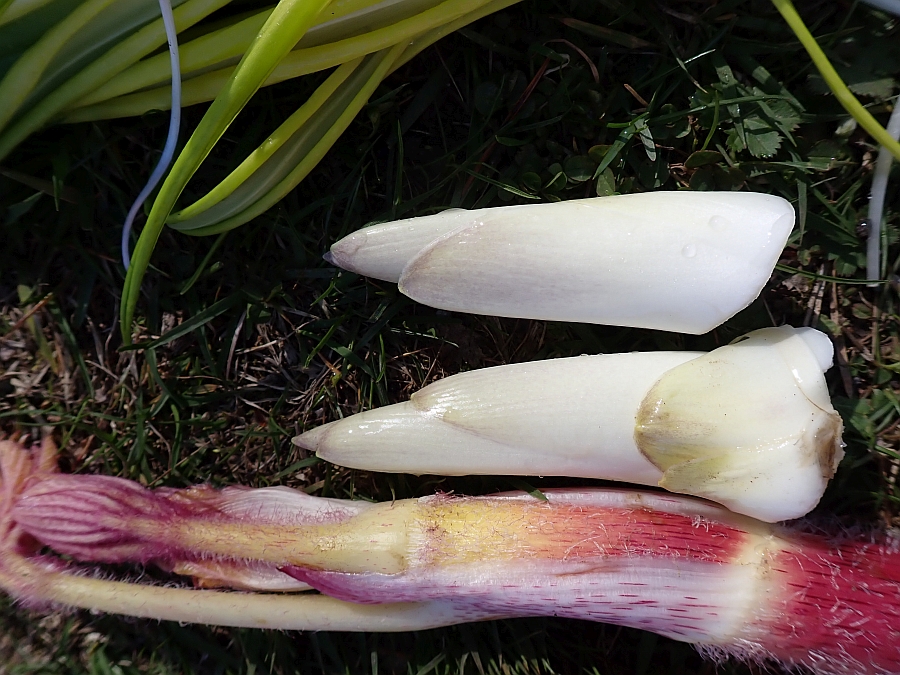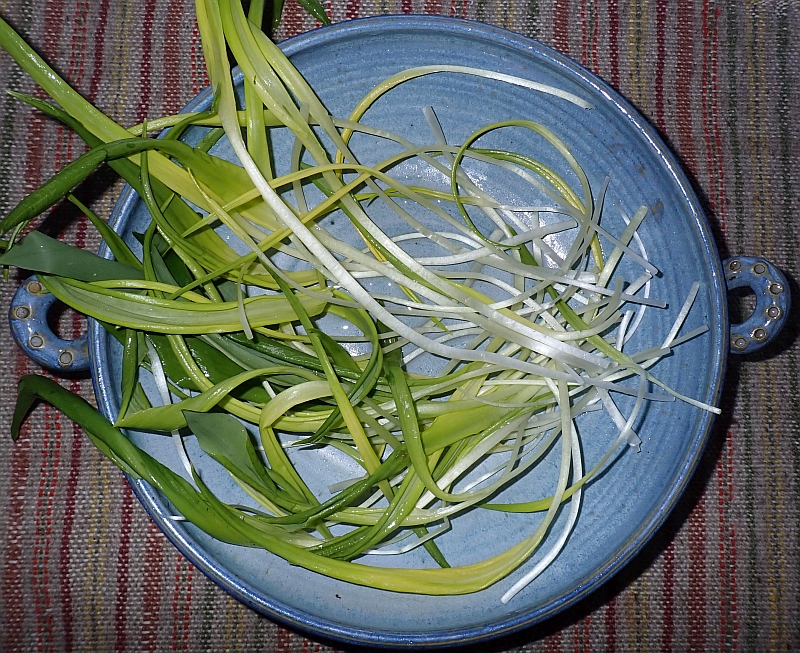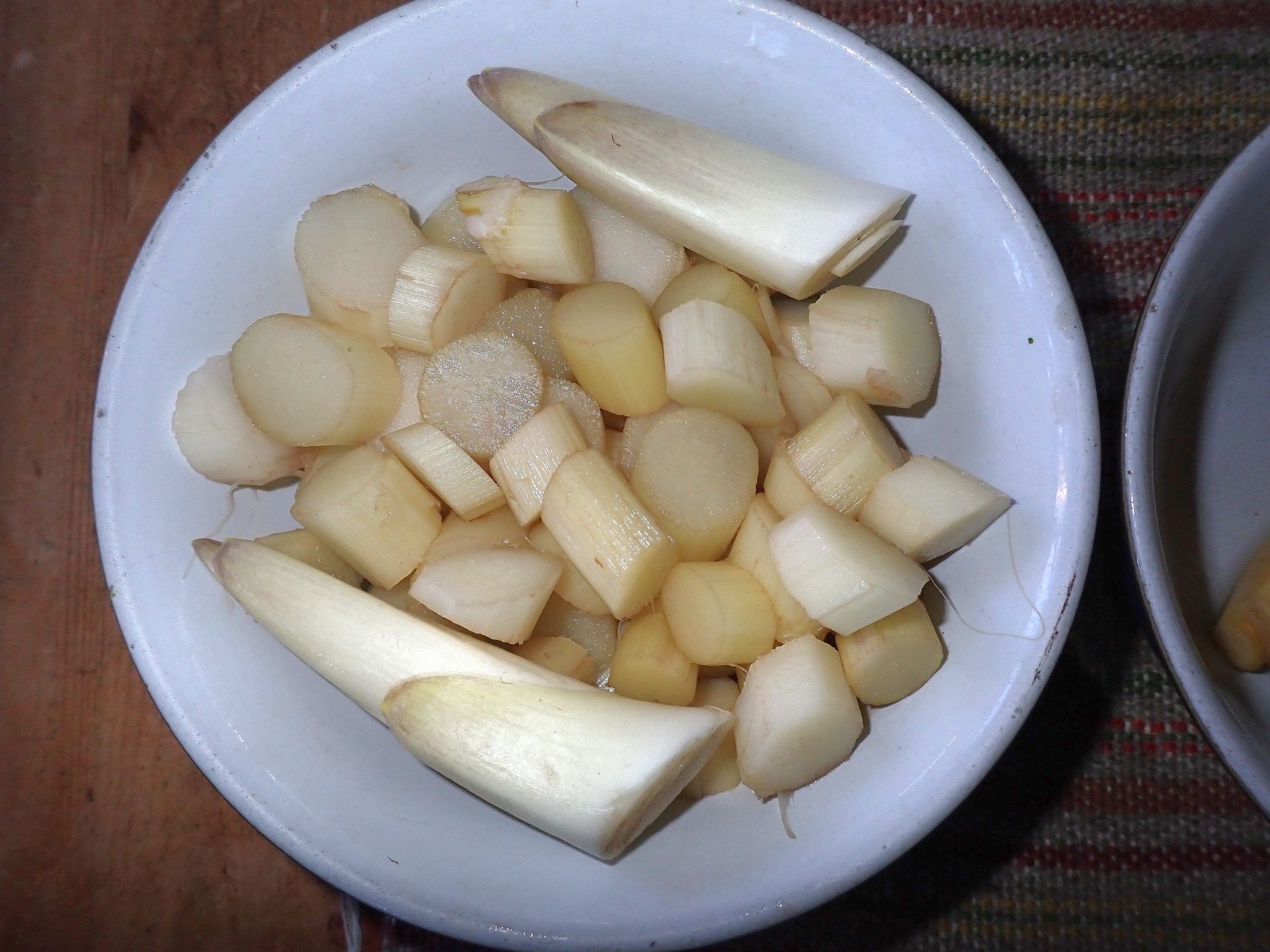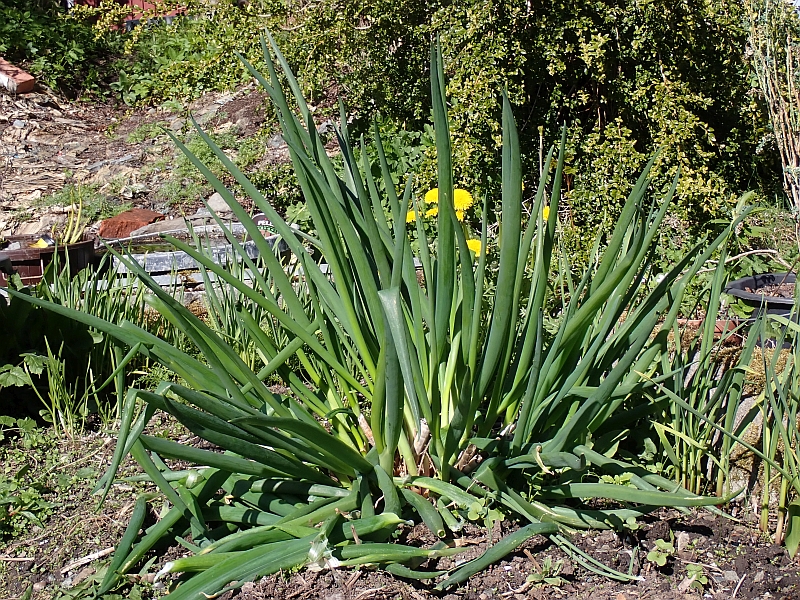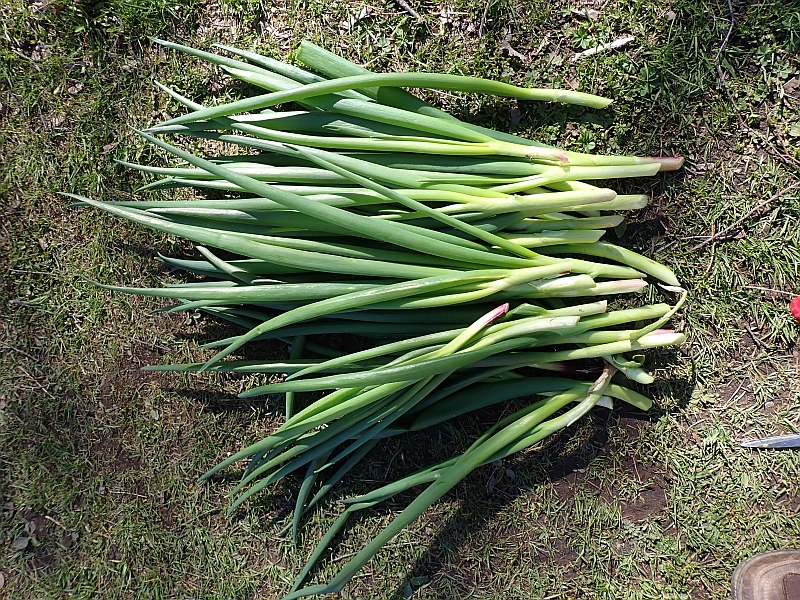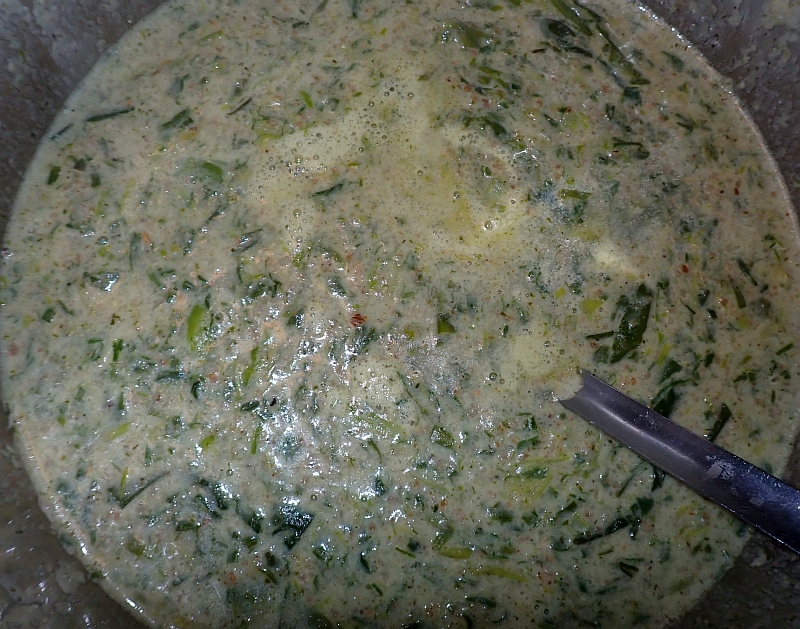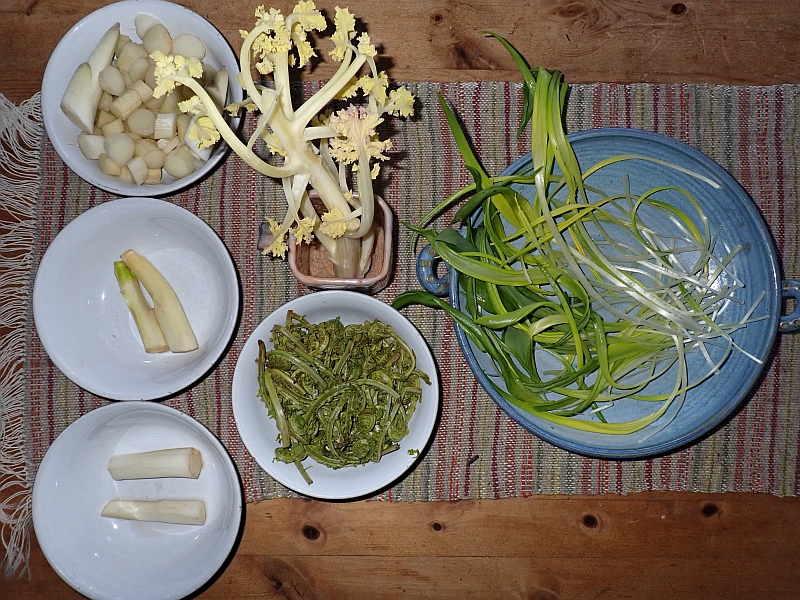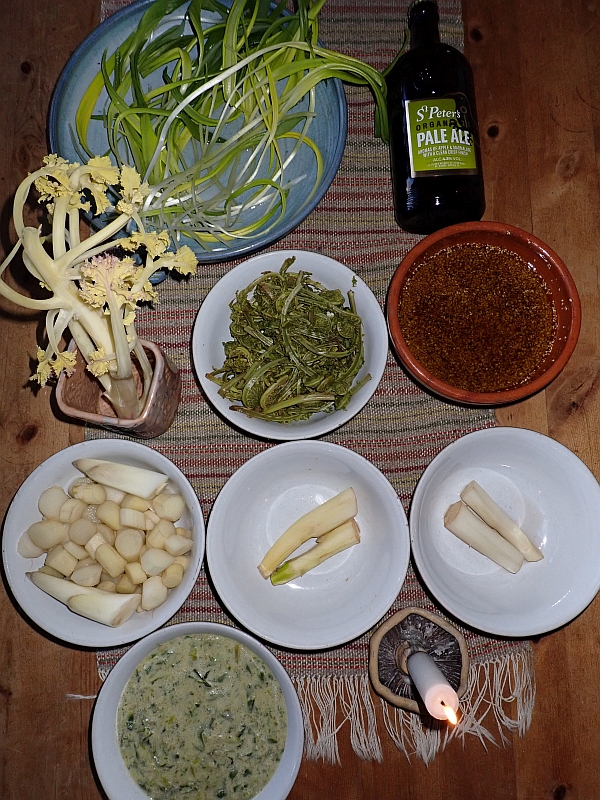During a powerful wind storm earlier in the year one of my oldest sallow / selje trees on the edge of the wild part of the garden was wind thrown and fell over the part of my garden most resembling a forest garden where my impressive 20-year old udo (Aralia cordata) is located. Luckily, it did no damage to my apple trees and the trunk is hanging horizontally over this area with part of the root still attached and what was the top of the tree now in full flower right next to the pathway down the garden. Salix caprea is dioecious with male and female flowers on separate trees. This one is female. I have over the years become more and more aware of the incredible importance of Salix caprea in providing food in early spring to a myriad of insects – wild bees, bumble bees, moths etc., all programmed to emerge at this time. In addition, it is host in Norway to 260 moth and butterfly species at the larval stage! This then leads to this tree being an important source of food to a range of birds and some like the chiffchaff (gransanger) are also programmed to return at sallow flowering time. During visits to my mum in Southern England in March / early April I visit other fallen sallows to look for interesting insects and I’ve noticed that they can continue flowering for several years after falling and resprout from the part of the root in the soil. So, although I was initially saddened bye the loss, this is just one of several large sallow trees in this part of the garden and now I have the top of a sallow at eye level right next to a path in the garden and can now study visiting insects closely. Just now, I saw an early bumblebee / markhumle (Bombus pratorum) feeding on the catkins. It’s also a perfect place to hang my moth trap (picture)!
Hence “A blessing in disguise” (Norwegian: hell i uhell).
See also https://www.edimentals.com/blog/?p=32035
Tag Archives: Udo
February Hosta-Udo salad
The year’s first taste of Hosta and Udo shoots (dug in the autumn, stored in the cellar and forced in the living room in the dark), used in today’s delicious salad. Easy when you know how! The ingredients list is below the pictures!
Salad ingredients:
Udo (Aralia cordata)
Hosta sp.
Begonia flowers
Watercress / engelsk brønnkarse
Apium nodiflorum
Celery / selleri
Hablitzia tamnoides (Caucasian spinach / stjernemelde)
Crambe maritima (sea kale / strandkål); forced in the cellar
Dandelion / løvetann
Chicory / sikori (3 varieties)
Allium senescens
Allium triquetrum
Garlic / hvitløk (including shoots from bulbils)
Dioscorea polystachya (Japanese yam)
Horseradish / pepperot shoots (forced inside)
Turnip / nepe
Jerusalem artichoke / jordskokk
Carrot / gulrot (orange and white varieties)
Parsley / persille
Perennial kale / flerårige kål
Cress / karse
The first Udo photo shoot for 2024
Despite the record warm May here at 63.4N with temperatures up to 30C and drought like conditions (forest fire warnings on the news every day), my now 23 year old udo (Aralia cordata) has grown away well, but perhaps not as vigorous as normal in cooler damper conditions which are the norm for May. Sadly, my California-udo (Aralia californica) which was in a much drier location seems to have died, although I have a clone in the World Garden at the Væres Venner Community Garden.
Thanks to KVANN member Nina Sandli who took the picture on a visit on 25th May!
More about my super vegetable in many blog posts, see https://www.edimentals.com/blog/?s=udo
or read about it in my book Around the World in 80 plants!
ARTIKLER OM FLERÅRIGE GRØNNSAKER FRA HAGETIDEND 2021
I 2021 publiserte Norsk Hagetidend en serie artikler jeg hadde skrevet om 10 av mine favoritt flerårige grønnsaker til Norsk Hagetidend. Alle artiklene kan nå bli lastet ned ved å klikke på lenkene nedenfor!
English: In 2021, I wrote a series of two page articles about my favourite perennial vegetables for Norsk Hagetidend (the magazine of the Norwegian Horticultural Society) in Norwegian. The complete series can be found below.
The plants are (scroll down to all the articles):
February 2021 Caucasian spinach / stjernemelde (Hablitzia tamnoides)
March 2021 Horseradish / pepperrot (Armoracia rusticana)
April 2021 Sea kale / strandkål (Crambe maritima)
May 2021 Nodding onion / prærieløk (Allium cernuum)
June 2021 Udo (Aralia cordata)
July 2021 St, Jansuien / sankthansløk (Allium x cornutum)
August 2021 Cherokee spinach / gjerdesolhatt (Rudbeckia laciniata)
September 2021 Hosta / bladlilje (Hosta spp.)
October 2021 Patience dock / hagesyre (Rumex patientia)
November 2021 Persian shallot / persisk sjalott (Allium stipitatum)
This year’s udo picture!
Presenting this year’s udo (Aralia cordata) almost fully extended 🙂
Thanks to Elin Eriksen for the picture (she has been Artist in Residence at the Edible Garden the last few days with focus on perennial vegetables)!
Mountain cultivation of Udo in Nagano
On 9th April 2016 I was staying with my new friend Tei Kobayashi in the mountains in a lovely village, Nogura, above Ueda in Nagano Prefecture. I was put in touch with Tei through a mutual friend in Norwegian Seed Savers (KVANN), Caroline Ho-Bich-Tuyen Dang, when I put out a call for an interpreter when visiting the farm with the underground udo forcing caverns in Tokyo: https://www.edimentals.com/blog/?p=8284 and https://www.edimentals.com/blog/?p=7499
Tei had kindly agreed to travel down to help out!
She took me to see udo (Aralia cordata) being grown on a small farm in her village with a villager who had knowledge of sansai. The new shoots were just appearing through a thick layer of rice husks. Here’s a video and some pictures of this beautiful place! Thanks again to you Tei for your hospitality without which this would never have been possible!
There will hopefully be more posts from the visit with Tei as soon as time allows!
Tei starts talking about another use of rice husks, in nukazuke, fermented vegetables in rice bran (nuka), see https://en.wikipedia.org/wiki/Nukazuke
(Thanks to Tei for the following clarification: I just wanted to comment on the Udo cultivation process. I just learned that it is not “nuka “ but “momigara” that the plants are grown in to keep them white. “Momigara is the outermost husk of the rice kernel. “Nuka” is the inner rice hull it is very finely ground into an almost powdery substance. Nuka is the outer covering of the rice that is removed to make it white…it is often polished after the hull is removed”.)

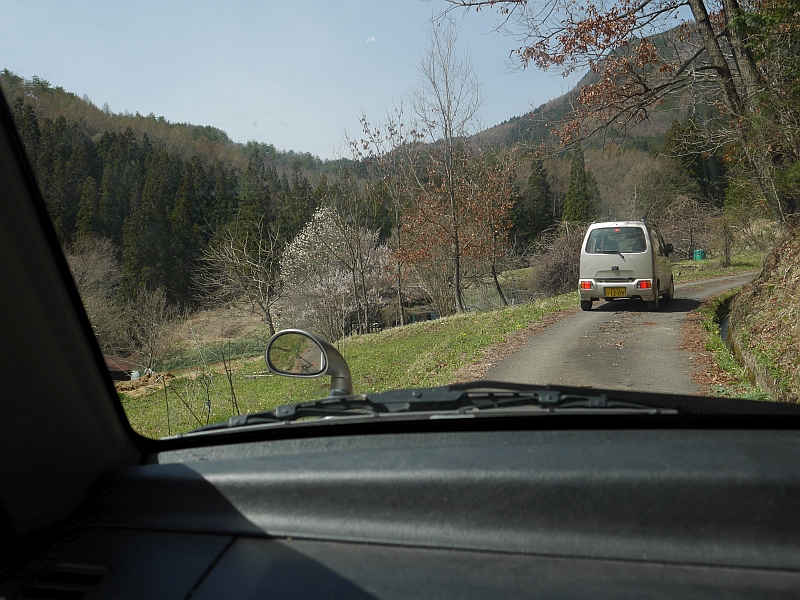
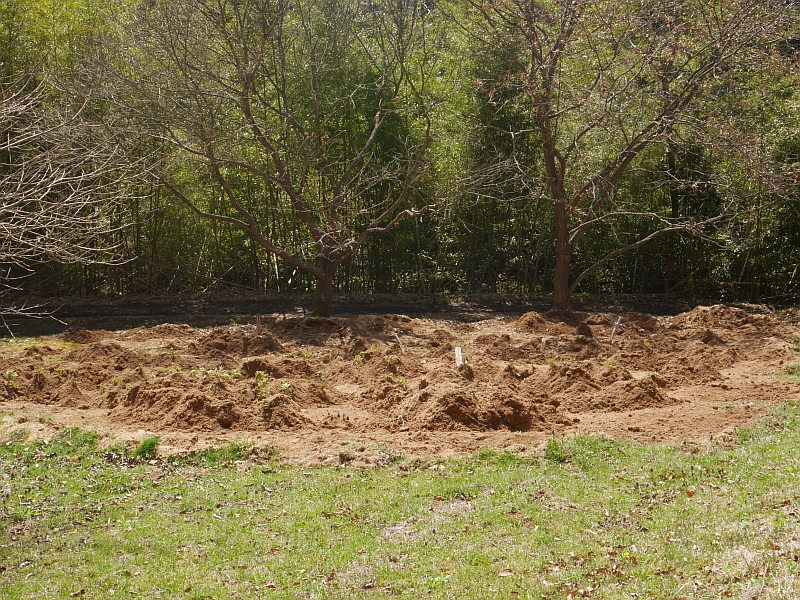

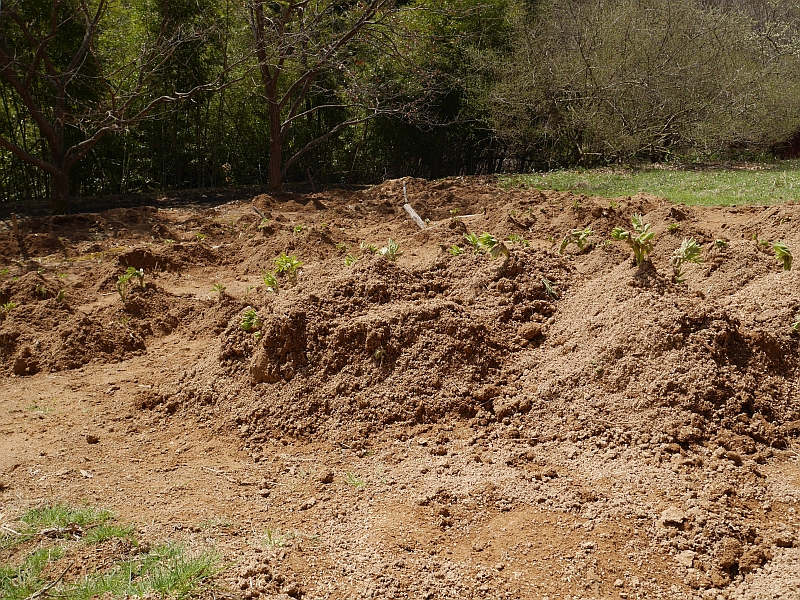






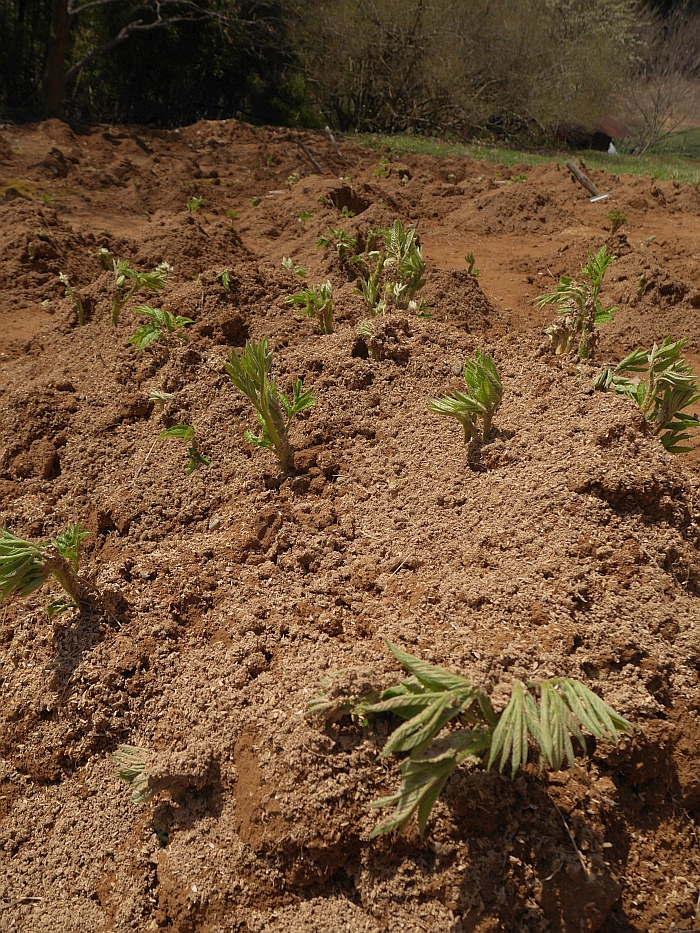


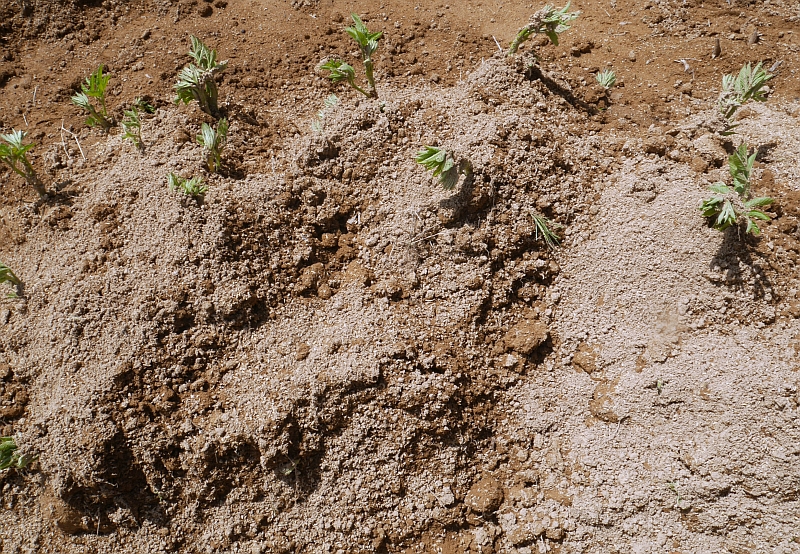 Showing us Chengiopanax sciadophylloides (koshiabura) which had yet to emerge:
Showing us Chengiopanax sciadophylloides (koshiabura) which had yet to emerge: 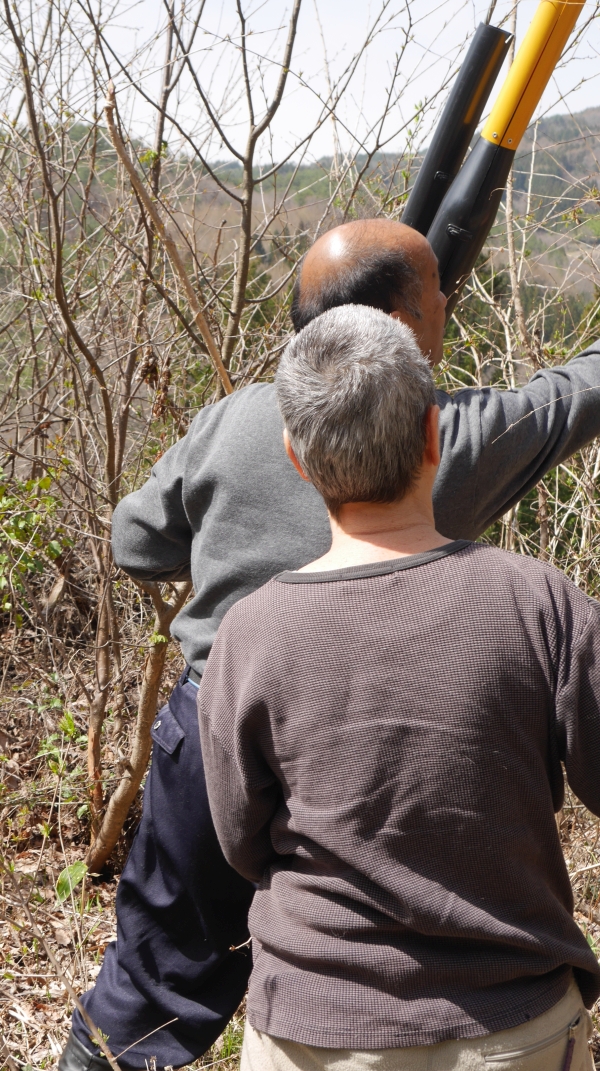

Fairchild’s Experiments with Udo from 1914!
Yesterday, I introduced Agricultural Explorer David Fairchild who, inspired from visiting Japan, was determined to try to introduce udo (Aralia cordata) and wrote an interesting paper 120 years ago giving more details about this novel perennial vegetable:
Udo introduction to the US with cultivation instructions (1903)
11 years later in 1914, he wrote a really interesting report summing up his experiences with udo. It blows my mind to read how much work was done on this plant over 100 years ago, but sad to see that it was never adopted in a big way! You can read the whole report and I recommend you do, but I’ve picked out some titbits from the report that I found particularly interesting followed by a few other interesting excerpts from various inventories of introduced plants to the US!
Udo introduction to the US with cultivation instructions (1903)
I stumbled upon this interesting US Department of Agriculture Bulletin from 1903 by David Fairchild, who calls himself Agricultural Explorer, entitled “Three New Plant Introductions from Japan”. There are 4 pages and some photos concerning udo (Aralia cordata) in the article “Udo : A new winter salad” (see pages 17-20 and the plates in the pdf below). This gives detailed growing instructions for “Kan udo” and “Moyashi udo” for harvesting during winter (October to May); these are cultivation techniques rather than udo varieties. Winter cultivation is more relevant to areas with relatively warm winters.
The other two plant introductions are Edgeworthia chrysantha as a fibre plant (for producing paper) and wasabi (Wasabia japonica).
Kyle Dougherty posted on my Edimentals Facebook group in 2021 about the same program with a great picture of udo cultivation and wrote “Here’s an interesting story for the udo (Aralia cordata) fans out there. In 1902 the USDA imported some 25,000 improved udo plants into the United States from Japan for trialing as a new vegetable crop. Plants were grown at the experiment station in Rockville, MD until at least 1917, and were also distributed to private gardens around the country and the Chico field station in CA. The Rockville experiment station is long gone, and is now the site of Montgomery College, but I can’t help but wonder if any of these plants are still out there somewhere. It’s also kind of a bummer that it never really caught on despite the effort the USDA put into it.”
Here’s the document I discovered (pages and plates are repeated below)
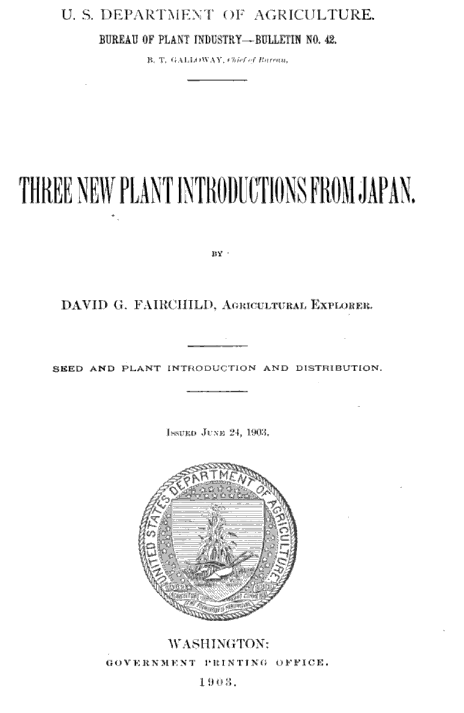

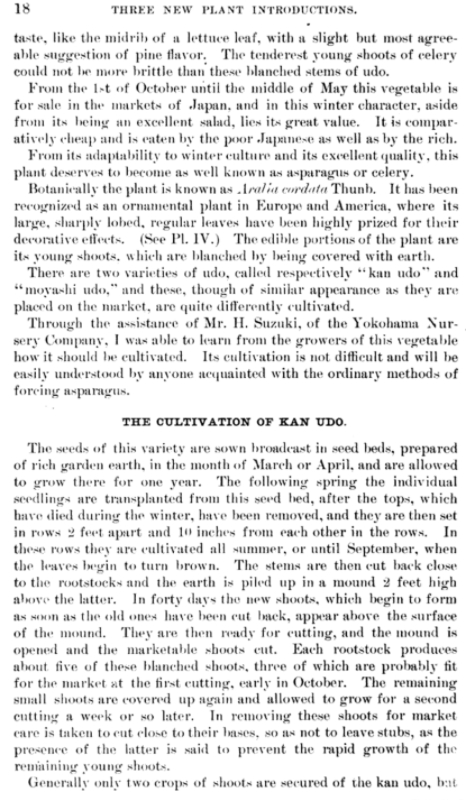


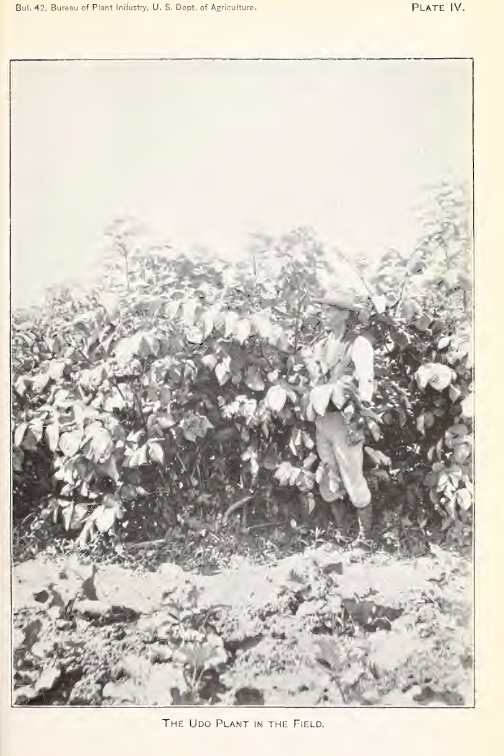

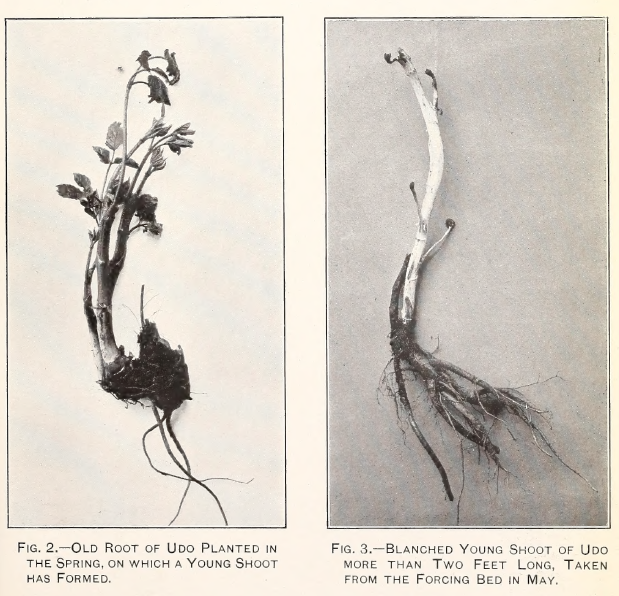
Wietse’s Onion Soup with Udos, Hosta, Ostrich Ferns, Sea Kale and Ramsons
The best of spring in one sitting. In celebration of the country Norway, we yesterday (17th May) harvested a small selection of the best blanched perennial vegetables (apart from the ostrich fern which had to be harvested or it would have been too late). This included three udo species (Aralia cordata, Aralia californica and Aralia racemosa), sea kale (Crambe maritima), Hosta “Big Daddy” together with delicious sweet blanched ramsons (Allium ursinum) . They were all eaten raw (apart from the fern which was steamed for 10 minutes) with a Japanese dipping sauce – olive oil (should have been sesame), tamari (soy sauce) and roasted sesame seeds. These accompanied an onion soup prepared with half of the leaves from one plant of Wietses Onion, a vigorous hybrid of Allium pskemense and Allium fistulosum!
It doesn’t get much better than this! More information with the pictures:
The 2021 Selfies with a 20-year old Udo
This year’s udo (Aralia cordata) selfie pictures, probably the highest ever with a flowering spike way above my head. I harvested about 1/3 of the shoots in the spring. This is my largest herbaceous perennial vegetable that was planted here 20 years old ago! It has never had any fertiliser and is growing on the steepest slope in my garden. Ostrich fern (strutseving) and giant bellflower (storklokke) can be seen in the foreground.